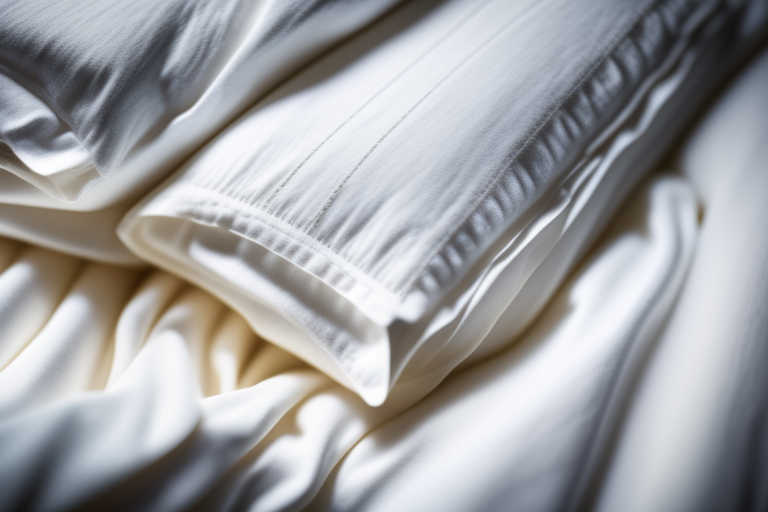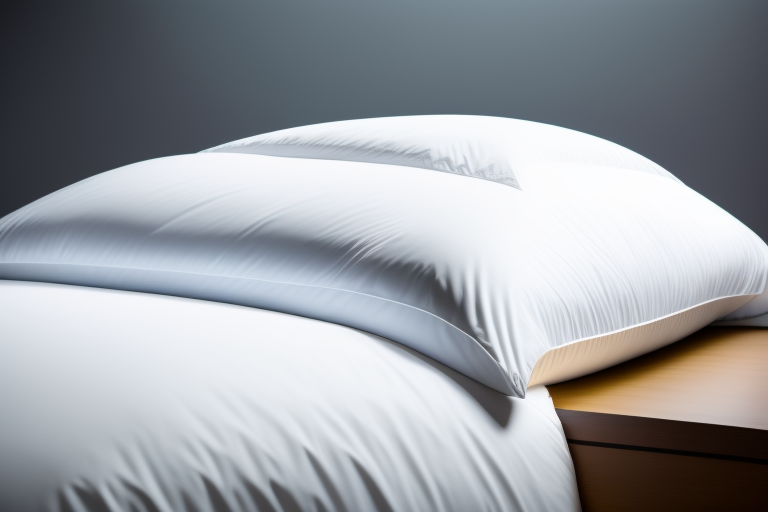When it comes to bedding, we all want comfort and quality that will stand the test of time. The last thing you want is to invest in bedding, only to have it wear out after a few months or years. The good news is that there are steps you can take to find bedding that will remain soft, cozy, and intact even after years of use.
In this beginner’s guide, we will go over everything you need to know to find the most durable, long-lasting bedding that will give you a wonderful night’s sleep for years to come. We’ll discuss the different factors that affect bedding durability, recommend the best materials and brands, and provide care tips to help your bedding stand up to repeated washing.
With the right information, you can identify quality, resilient bedding that will stay looking great while keeping you comfortable at night. Let’s get started!
Factors That Impact Bedding Durability
Not all bedding is created equal when it comes to longevity. Certain factors determine whether bed linens will stand up well over time or fall apart after just a few uses. Here are the key things that affect durability and lifespan:
Quality of Materials
Higher quality materials like premium cotton, linen, and silk outperform cheaper synthetic fibers like polyester. Be wary of extremely inexpensive bedding as it likely won’t hold up. Focus on reputable brands that use natural or high-end synthetics.
Thread Count
Thread count measures the number of threads woven into one square inch of fabric. While higher thread counts often signify softer, more luxurious sheets, going too high can result in thin, less durable threads. Aim for 200-600 thread count for optimal strength.
Weave Type
Look for sheets made with percale, sateen, or twill weaves, which are tighter and more durable than loose knits. For blankets and quilts, dense waffle weaves stand the test of time.
Construction
Well-constructed bedding with tightly woven fabric, reinforced seams, and double stitching lasts longer than flimsily made items.
Care and Washing
Following the proper care instructions keeps bedding intact. Harsh detergents, hot water, and high heat drying slowly break down fibers.

The Most Durable Bedding Fabrics
Now that you know what makes bed linens last, let’s examine the best fabrics and materials for long-term wear.
Natural Fibers
Cotton: Prized for its breathability and durability, high-quality cotton with a 200-400 thread count can last for 10+ years with proper care. Look for labels like Egyptian or Pima cotton.
Linen: One of the strongest natural fabrics, linen becomes softer over time. It’s very durable and can last decades.
Silk: Not as long-lasting as cotton or linen but silk is extremely strong for how delicate it feels. With gentle washing, it holds up for many years.
Wool: Naturally resistant to pilling and tearing, wool makes excellent blankets and duvets that stand up to time. Merino wool is best.
Down:duck Down comforters can remain fluffy and warm for up to 10 years if the outer fabric is high-quality and they are professionally cleaned.
Feathers: Goose or duck feather pillows and toppers can maintain their loft and support for several years with care.
Synthetic Fibers
Microfiber: Affordable, soft microfiber sheets can last 5+ years if densely constructed with a 180-300 thread count.
Polyester: Durable, wrinkle-resistant, and quick-drying, polyester holds up well as sheets and shams. Look for quality brands.
Rayon derived from bamboo: This semi-synthetic made from bamboo pulp is long-lasting, breathable and soft.
Tencel: Derived from wood pulp, Tencel fibers are extremely durable, breathable and eco-friendly.
Modal: A semi-synthetic made from beech trees, modal bedding resists pilling and tearing.
Specialty and Sustainable Bedding
If you want bedding that does more than just hold up over time, consider these specialty options:
Organic bedding
Sourced from natural materials grown without pesticides or chemicals. More eco-friendly.
Hypoallergenic bedding
Ideal for those with allergies, as synthetic fibers resist dust mites.
Moisture-wicking athletic bedding
Keeps hot sleepers dry and cool using advanced textiles.
Temperature regulating bedding
Special materials help absorb and release heat for the perfect sleep temperature.
Custom bedding
Get an exact fit for your mattress with made-to-order sized bedding.
While pricier, these types of bedding are often made of innovative textiles that enhance durability.

Tips for Prolonging the Life of Your Bedding
To make your bed linens stand the test of time, incorporate these care practices:
- Wash bedding on a gentle cycle in cold water with a mild detergent. Never use bleach.
- Tumble dry on low if the fabric allows or line dry. Remove promptly to prevent wrinkles.
- Rotate pillows and mattress toppers to evenly distribute wear and regularly fluff down/feathers.
- Inspect for holes, tears or thinning fabric. Make repairs immediately to prevent larger holes.
- Iron on a low setting if wrinkles appear between washes.
- Store off-season bedding in breathable containers to prevent mildew or dust mites.
- Replace pillows every 1-2 years and mattress protectors every 5 years. Plan to purchase new sheets every 5-10 years.
With proper care, even the best bedding can last up to 10-15 years or longer.
Top Durable Bedding Brands
Looking for specific product recommendations for resilient, high-quality bedding that withstands years of use? Here are the top brands for each category:
Cotton Bedding
- Brooke + Wilde (200-400 thread count, percale weave, $150-300 range)
- Boll & Branch (300-500 thread count, sateen weave, $200-500 range)
- Parachute Home (300-500 thread count, sateen weave, $150-300 range)
- Cozy Earth (300 thread count, sateen weave, $300-500 range)
Linen Bedding
- Magic Linen (250-300 GSM weight, $250-600 range)
- Cultiver (200-300 GSM weight, $180-600 range)
- Linoto (230-270 GSM weight, $200-500 range)
- Piglet in Bed (200-280 GSM weight, $100-300 range)
Down Comforters
- Brooklinen (550-700 fill power, baffle box construction, $200-600 range)
- Parachute Home (700-900 fill power, baffle box construction, $350-500 range)
- Cuddledown (600-900 fill power, baffle box construction, $300-700 range)
- Cozy Earth (700 fill power, double-stitched seams, $470-600 range)
Wool Bedding
- Woolroom (100% Merino wool, 230-300 thread count, $150-600 range)
- SheepDream (100% Merino wool, 300 thread count, $100-400 range)
- Magic Wool (100% Merino wool, 230 thread count, $100-300 range)
- Woolie (100% Merino wool, 200-280 GSM, $80-250 range)
Key Takeaways: Choosing the Best Bedding for Longevity
- Seek out natural materials like cotton, linen, and wool or high-end synthetics like Tencel for optimal durability.
- Check the thread count (200-600 is best), weave type, and construction quality when sheet shopping.
- With proper care – gentle washing, low drying, prompt removal from dryer – bed linens can last 5-10+ years.
- Investing in premium materials from reputable brands will ensure your bedding withstands years of use.
- Specialty bedding like hypoallergenic and moisture-wicking offers increased longevity.
- Replace pillows and mattress toppers regularly while shopping for new sets of sheets every 5-10 years.
With this advice, you can identify resilient, high-quality bedding that will provide the comfort you need for years of restful sleep to come. Just keep quality materials, proper care, and reputable brands in mind while shopping. Sweet dreams!
Frequently Asked Questions
How often should I replace my bed sheets and bedding?
With proper care, high-quality bed sheets and bedding can last 5-10 years or longer. However, a good rule of thumb is to replace pillows every 1-2 years, mattress toppers every 5 years, and sheet sets every 5-7 years for optimal comfort and hygiene. If you notice thinning fabric, holes, stains, or other visible signs of wear, it’s time to replace your bedding sooner.
What thread count is the most durable for bed sheets?
For maximum strength and durability, look for bed sheets with a thread count between 200-600. Avoid extremely high 1000+ thread counts, as this causes thin, flimsy fabric that tears easily. The best bets are cotton sheets with a 200-400 thread count or linen sheets with a 250-300 thread count.
Should I buy high-end designer bedding for longevity?
Investing in high-quality materials from reputable luxury brands can be worth it if durability is your top priority. Designer bedding made with premium fabrics like long-staple Egyptian cotton, eucalyptus Tencel, and Italian linen will typically hold up better over many years of use and washing compared to generic mass-market lines.
What are the signs that my bedding needs to be replaced?
Telltale signs it’s time to replace your bedding include: thinning, holey, or ripped fabrics, sheets that no longer fit the mattress, flattened or lumpy pillows, comforters with broken baffle boxes, and discoloration or stains that don’t come out in the wash. If your bedding is visibly worn or no longer provides comfort and support, it’s time to shop for a fresh set.
How can I make my bedding last as long as possible?
To prolong the lifespan of your bedding, wash items gently on a cold cycle, air dry or tumble dry on low when needed, promptly remove from dryer to prevent wrinkles, spot clean stains when possible, and repair any minor tears. Store off-season bedding properly to avoid damage from pests or mildew. Finally, rotate and fluff bedding regularly to distribute wear evenly. With proper care, even the finest bed linens can last for many years of cozy comfort.








